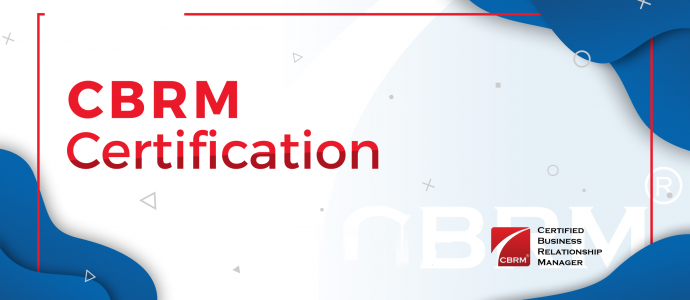Exploring the Evolution of the CBRM Certification Course

The Certified Business Relationship Manager (CBRM) certification has long been a cornerstone for professionals workings towards becoming strategic partners, driving value both within and outside their organizations.
Designed for intermediate experience level BRMs, or anyone managing strategic relationships- including HR leaders, BRM team leaders, project managers and those who are responsible for the continous growth and improvement of their organization- this course focuses on the partner network, and overall maturity of the BRM capability.
This article delves into the differences between the original CBRM and the Evolved CBRM course, highlighting what has changed as well as what’s here to stay.
Comparing CBRM Course Objectives
The course objectives for the first version were designed to equip Business Relationship Managers with the skills and knowledge needed to effectively communicate the purpose and objectives of the Strategic BRM role. This included focus on strategic communication, leveraging personal influence, and building “trust relationships” within the organization.
While many of these objectives remain true in the Evolved CBRM course, the newest iteration reflects a more holistic and strategic approach to the BRM capability, with emphasis on organizational purpose, impact, and value realization. This shift in focus not only investigates how BRM contributes to organizational purpose and strategy but also how it fosters a culture of great working relationships and the practical steps necessary for organizational change. The course returns favored community topics such as identifying and addressing value leakage, how to become a strategic collaborator, as well as key partnering tools to rapidly evolve culture so that an organization can perpetually thrive.
A large majority of the changes in the Evolved CBRM include updates in language and simplification of the various BRM capability frameworks, similar to the Evolved BRMP update.
While many of the community-loved tools and techniques remain, the Evolved CBRM has been reformatted and includes new topics like:
-
Building a relationship-centered organization.
-
How demand is expressed or responded to in order to better influence demand.
-
What principles are and how they reflect an organization’s purpose and influence strategy.
-
Identifying desired behaviors that can be modeled by highly influential people across the relationship network.
The newest Evolved CBRM signifies a shift towards a more integrated, strategic, and holistic approach to Business Relationship Management.
The original CBRM focused on the tactical aspects of value management and innovation within business relationships. In contrast, the Evolved CBRM broadens the scope to include a deeper understanding of organizational purpose, energy, and how to influence intentional positive change that ensures results.
The updated curriculum emphasizes strategic initiatives using advanced methods like Scenario Planning and Capability Roadmapping, and it highlights the importance of cultivating key influencers and growing relationship capital across the organization. The Evolved CBRM also focuses on shaping strategic agendas with consideration of potential risks and areas in which value can leak.
The evolution from Legacy CBRM to Evolved CBRM represents a significant advancement in the field of Business Relationship Management. By updating the language, simplifying frameworks, and introducing new topics, the Evolved CBRM aims to better prepare BRMs to drive meaningful value and foster a culture of collaboration and innovation within their organizations.
Regarding Certification Validity
For those who obtained their CBRM certification based on the Legacy materials, rest assured that your certification remains valid as long as you continue to manage your professional development points (CPDs).
The transition to the Evolved CBRM does not invalidate previous certifications but rather enhances the curriculum to better equip BRMs for the evolving business landscape.
